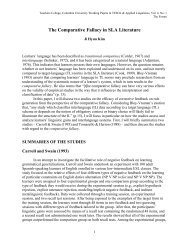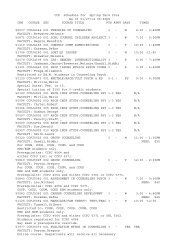UNICEF Mongolia - Teachers College Columbia University
UNICEF Mongolia - Teachers College Columbia University
UNICEF Mongolia - Teachers College Columbia University
Create successful ePaper yourself
Turn your PDF publications into a flip-book with our unique Google optimized e-Paper software.
CHAPTER 6: TEACHER EFFECTIVENESS<br />
1<br />
2<br />
3<br />
4<br />
5<br />
6<br />
CHAPTER 6: TEACHER EFFECTIVENESS<br />
The effecveness of teaching may ulmately only be assessed, comparavely that is, by comparing<br />
student outcomes in <strong>Mongolia</strong> with that in other countries. <strong>Mongolia</strong> has not yet parcipated in these<br />
kind of IEA or OECD-type of studies (TIMSS, PISA) and earlier regional and internaonal studies (such as<br />
MLA) are by now dated.<br />
In the absence from such reliable, internaonal comparave measures, this study has resorted to posing<br />
a few key quesons that relate to teacher effecveness:<br />
(1) What percentage of teachers serve as substute teachers, that is, teach subjects for which they<br />
were not trained?<br />
(2) What are the licensing criteria and quality assurance mechanisms?<br />
(3) How and for which groups of teachers is in-service teacher training provided?<br />
This last chapter briefly addresses these three issues in an aempt to shed light on some of the key<br />
aspects of teacher effecveness.<br />
6.1. THE SUBSTITUTION OF TEACHERS AND NON-LICENSED<br />
TEACHERS<br />
TEACHERS IN MONGOLIA: AN EMPIRICAL STUDY ON RECRUITMENT INTO TEACHING,<br />
PROFESSIONAL DEVELOPMENT, AND RETENTION OF TEACHERS<br />
There are three groups of teachers who work as non-licensed teachers in <strong>Mongolia</strong>:<br />
Group 1<br />
Group 2<br />
Group 3<br />
Young teachers: New teachers who graduated from pre-service teacher educaon<br />
and have only taught for one or two years. In most cases, they are granted a teaching<br />
license aer subming relevant documents for review (see secon 6.2.).<br />
Non-teachers: Professionals with a higher educaon degree who switched to the<br />
teaching profession (e.g., economist who teaches math).<br />
<strong>Teachers</strong> with another subject specializaon: <strong>Teachers</strong> who teach subjects for which<br />
they had no teacher training (e.g., math teacher who teaches biology).<br />
The teachers in the groups 2 and 3 are considered—in internaonal terminology—substute teachers.<br />
Substute teachers have become an object of great scruny in the TIMSS and PISA studies, specifically<br />
in the PISA 2006 study that dealt with science literacy. There is globally a shortage of math and science<br />
teachers, and schools in many countries substute the teachers for these subjects with other teachers<br />
who did not have training in math or science. It is believed that the quality of instrucon suffers if a<br />
subject is taught by a non-specialist or by a substute teacher. The poor results of students in Kyrgyzstan<br />
in the PISA 2006 study, for example, were directly linked to a shortage of science teachers. Schools in<br />
Kyrgyzstan—but also in any country where there is a shortage—compensate for the shortage by hiring<br />
non-specialist substute teachers. Apart from teacher shortages, there exist, however, other reasons for<br />
hiring substute teachers.<br />
90



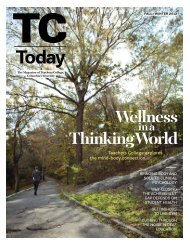

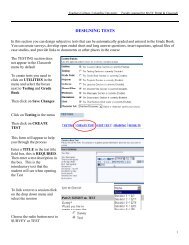


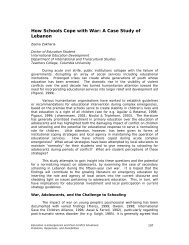
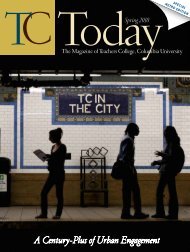
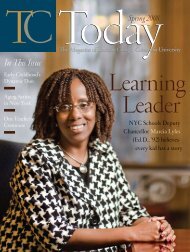
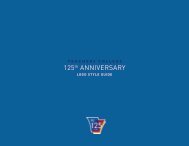


![TC Tod[...].pdf - Teachers College Columbia University](https://img.yumpu.com/27074883/1/190x252/tc-todpdf-teachers-college-columbia-university.jpg?quality=85)

